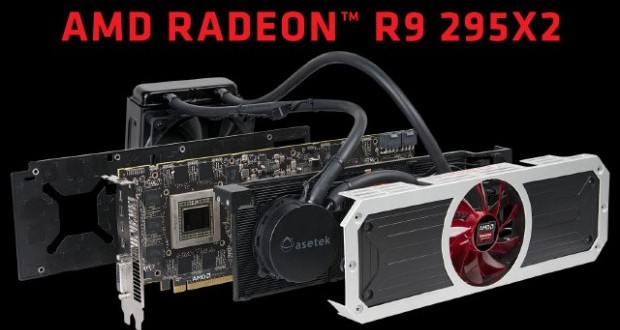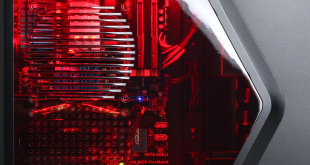After much speculation and a lot of teasers, AMD is releasing their long-awaited Hawaii-powered entry to their dual-GPU series of cards, available worldwide from April 21. AMD has a very powerful GPU at its disposal now, and with its R9 295X2, AMD is going beyond anything it’s done before, making it clear that they’re aiming for the top.
Almost a year ago, AMD launched the Radeon HD 7990, based on AMD’s then-flagship Tahiti GPUs. The 7990 was a solid design and it offered performance competing with a dual card setup, while fixing the weaknesses of Radeon HD 6990’s. The 7990 also had its weaknesses, the biggest of them being its bad timing –NVIDIA released their blockbuster GeForce GTX Titan two months earlier, at a time when the FCAT utility became available, enabling reliable frame pacing analysis, meanwhile exposing the weak points in AMD’s drivers.
Radeon R9 295X2 it’s in its latest range of gamer-centric GPUs, the card features a powerful dual-GPU setup that utilizes factory-fitted liquid cooling and boasts a full 8GB memory. The GPU is aimed to compete with NVIDIA’s rival Titan cards.
The standard for PC graphics performance is constantly being raised, AMD and NVIDIA constantly competing for the first place. Radeon R9 295X2 is AMD’s latest attempt to reach the top, and while it might not dethrone its rivals yet, it does present a teasing prospect to gaming enthusiasts.
The card offers a dual-Hawaii 290X configuration with 8GB GDDR5 memory, providing 11.5 TFLOPs compute power and an impressive 5,632 stream processors. The new card’s GPUs take advantage of the company’s Mantle technology, allowing developers to create a more efficient code that speaks more directly to the GPU while lowering CPUs workload and reducing jamming issues.
The card can handle ultra game settings at full 4K resolution, if pushed further, it can simultaneously run five high-definition displays for a total resolution, featuring an additional two million pixels over 4K. The flagship R9 card doesn’t own an HDMI port, it opts for a single dual-link DVI and four mini DisplayPorts.
The fact that the card has coated aluminum design and factory-fitted Asetek-developed liquid cooling solution should help it stand out amongst competition, this new technology helps the card run cool and quiet under heavy workloads.
The card costs US$1,500, a bit more than NVIDIA’s $1,100 Titan Black GPU, though the competing card has a less powerful 6GB memory and 2,880 stream processors. Answering to this, NVIDIA’s recently announced the Titan Z card, which possesses a full 12GB memory and costs $3,000.
The only major disadvantage of the R9 295X2 appears to be its power hungry nature, the card requiring at least 500W of power. Dual-GPU cards are often using highly stored GPUs to further contain power consumption, hence the reason for the R9 295X2’s doubled power consumption. As long as AMD can remove the heat, everything should be fine.
 Load the Game Video Games, Reviews, Game News, Game Reviews & Game Video Trailers
Load the Game Video Games, Reviews, Game News, Game Reviews & Game Video Trailers



